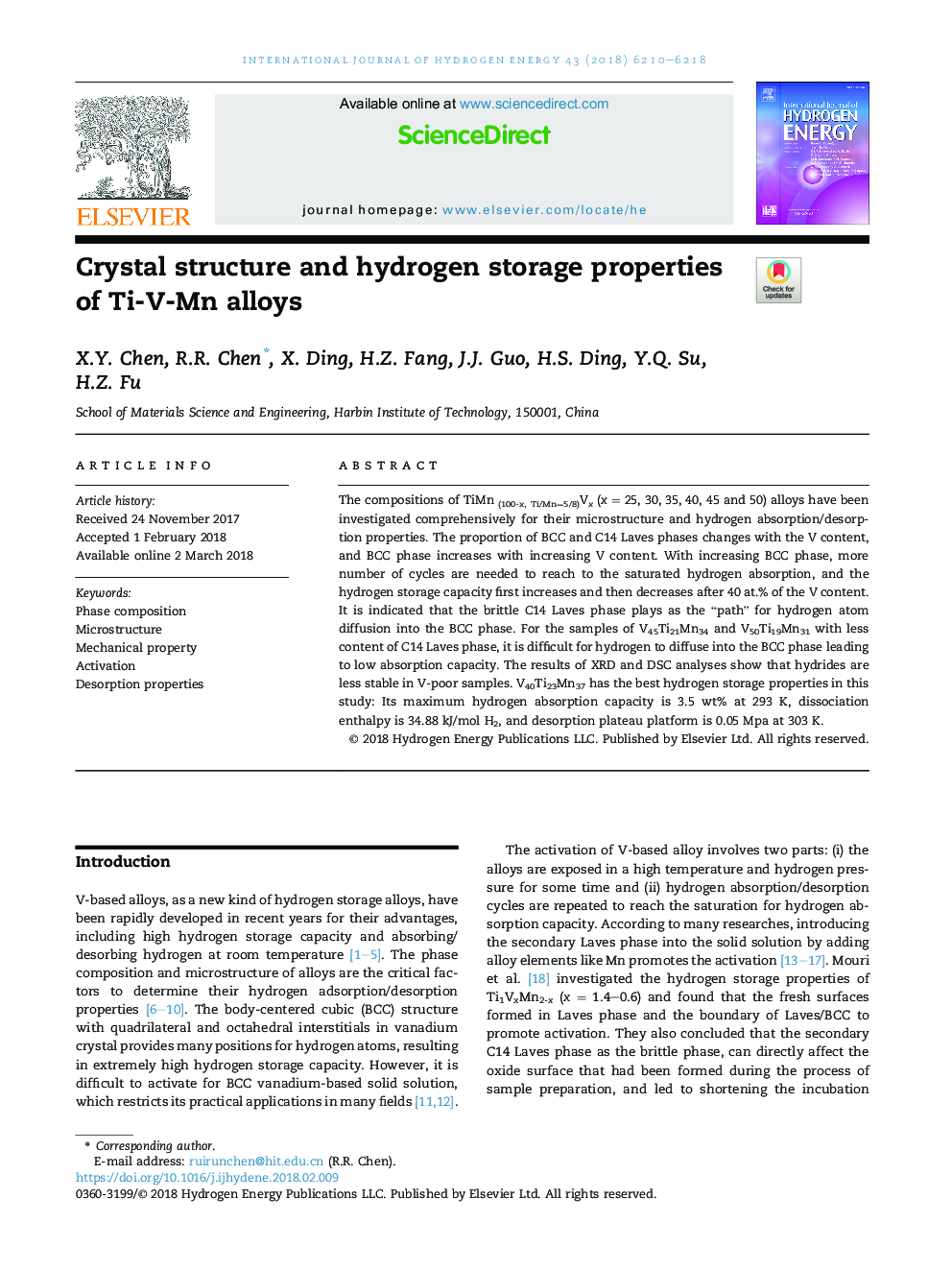| Article ID | Journal | Published Year | Pages | File Type |
|---|---|---|---|---|
| 7707009 | International Journal of Hydrogen Energy | 2018 | 9 Pages |
Abstract
The compositions of TiMn (100-x, Ti/Mn=5/8)Vx (x = 25, 30, 35, 40, 45 and 50) alloys have been investigated comprehensively for their microstructure and hydrogen absorption/desorption properties. The proportion of BCC and C14 Laves phases changes with the V content, and BCC phase increases with increasing V content. With increasing BCC phase, more number of cycles are needed to reach to the saturated hydrogen absorption, and the hydrogen storage capacity first increases and then decreases after 40 at.% of the V content. It is indicated that the brittle C14 Laves phase plays as the “path” for hydrogen atom diffusion into the BCC phase. For the samples of V45Ti21Mn34 and V50Ti19Mn31 with less content of C14 Laves phase, it is difficult for hydrogen to diffuse into the BCC phase leading to low absorption capacity. The results of XRD and DSC analyses show that hydrides are less stable in V-poor samples. V40Ti23Mn37 has the best hydrogen storage properties in this study: Its maximum hydrogen absorption capacity is 3.5 wt% at 293 K, dissociation enthalpy is 34.88 kJ/mol H2, and desorption plateau platform is 0.05 Mpa at 303 K.
Related Topics
Physical Sciences and Engineering
Chemistry
Electrochemistry
Authors
X.Y. Chen, R.R. Chen, X. Ding, H.Z. Fang, J.J. Guo, H.S. Ding, Y.Q. Su, H.Z. Fu,
